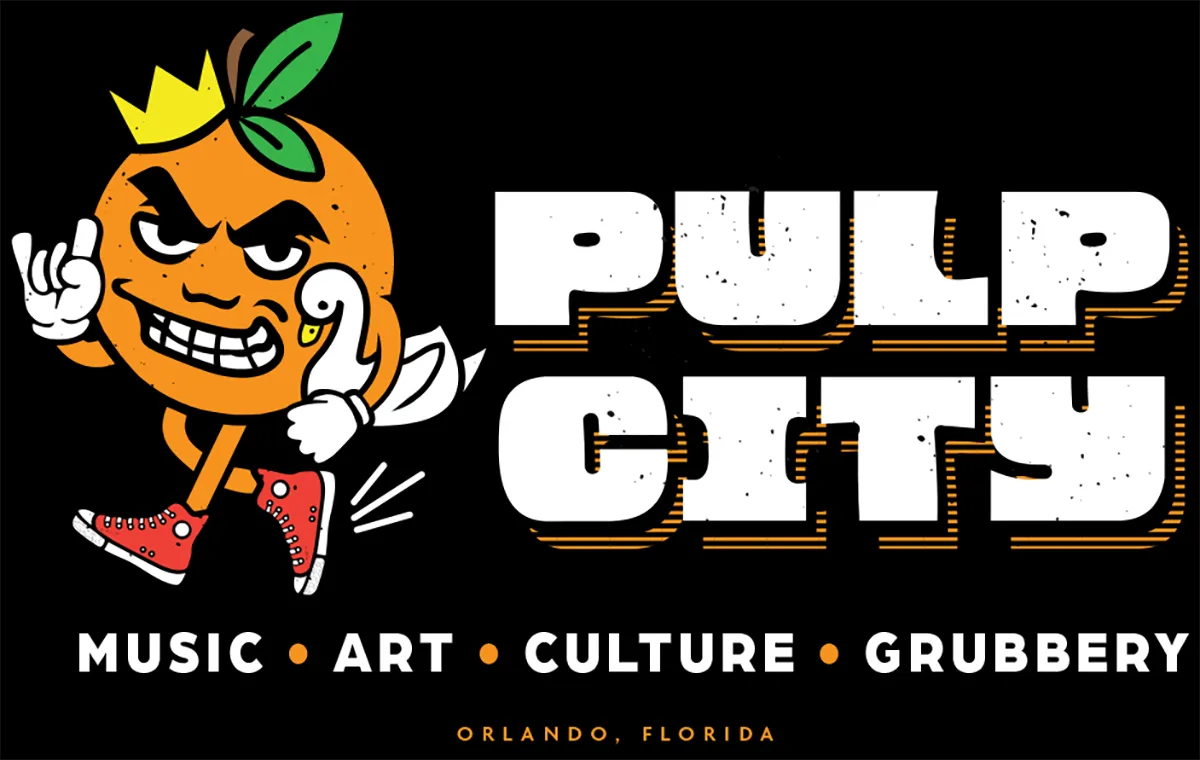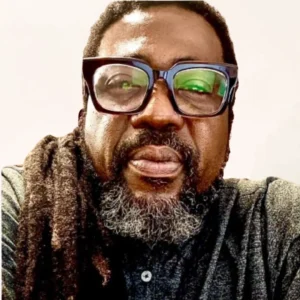Orlando Needs Paolo Banchero: The Superstar Magic Fans Can Trust
After years of heartbreak, Orlando Magic fans finally believe again. Here’s why Paolo Banchero is the superstar who can change

As Orlando celebrates 150 years of incorporation, the question of who shaped this city looms large. Politicians, developers, and dreamers all left their mark. But perhaps no single figure influenced the “City Beautiful” more than Martin Andersen, longtime publisher of the Orlando Sentinel, whose editorials paved highways, lured industry, and reshaped Orlando’s future. His legacy is written into our roads, our skyline, and even our divisions.
A Paper With Teeth
Andersen came to Orlando in 1931 with little more than ink and ambition. He took a job as general manager of the Orlando Morning Sentinel and the Evening Reporter-Star under owner M.C. “Mac” McCrary. He learned the business from the inside, cut his teeth in the newsroom and the front office, and made it clear he wasn’t content to just manage.
By 1945, he owned the papers outright. Circulation grew tenfold under his leadership. But more than that, Andersen also grew Orlando’s ambition.
He didn’t treat the paper like a mirror. He treated it like a lever. Push here, and a mayor gets elected. Push there, and Tallahassee listens. Keep pushing, and Orlando stops being a citrus town and starts becoming something else entirely.
Influence cuts both ways. That’s part of Andersen’s story too.
Roads Are Destiny
Andersen understood something simple: roads decide the future.
He fought for Interstate 4. He rallied for the Bee Line(S.R.528), the east–west corridor that tied Orlando to the Cape and, eventually, to the airport. That road carries his name today, the Martin Andersen Beachline Expressway.
His editorials pushed for toll roads and helped create the Orlando–Orange County Expressway Authority. He wanted Orlando on the map, literally. Asphalt wasn’t just asphalt. It was opportunity.
Historians debate how much Andersen directly influenced the Florida Turnpike’s route, but there’s no question he was one of the loudest voices making sure Central Florida’s highways kept the city connected, not cut off. He gave Orlando a seat at the table and pushed until it stayed there.
And those roads didn’t just move cars. They moved imagination… and set the stage for Orlando’s biggest arrival yet.
Selling the Dream
Disney didn’t stumble onto Orlando by accident.
Cheap land, yes. Weather, yes. But also highways. Access. A city already selling itself to the world. That was Andersen’s Orlando. Loud, organized, hungry.
Disney chose Central Florida for many reasons, but it didn’t hurt that the region had been selling itself hard for decades, with Andersen as one of its loudest voices.
Andersen didn’t just cover growth. He branded it. He planted orchids and camellias, pushed “City Beautiful” as an identity, and insisted Orlando look the part. Flowers, roads, editorials… all of it fed the same vision.
Growth, Power, and Division
For all the progress Andersen championed, not every community shared in the gains.
Parramore was a thriving Black community. Businesses, churches, families — a neighborhood with its own rhythm. Then came the highways.
I-4 ripped through Division Avenue, the street that had long marked the line between Black Orlando and white Orlando. The symbolism couldn’t be clearer. Division wasn’t just a name. It was a reality. And the new roads didn’t erase it. They reinforced it.
Families lost homes. Businesses closed. What had been a self-sustaining corridor was fractured almost overnight. The region cheered progress while neighborhoods like Parramore paid the price.
The irony is sharp. At the very moment orchids and camellias were being planted to polish Orlando’s “City Beautiful” image, one of its oldest Black neighborhoods was being carved apart.
To be fair, Andersen probably didn’t set out to harm Parramore.
But like many leaders of his era, he didn’t fully see… or chose not to see… who bore the cost of the progress he championed.
Ink and Shadows: The Sentinel’s Role in Orlando’s Story
Andersen’s power wasn’t only in highways. It was in the stories the media chose to tell, and the ones it didn’t.
In 1949, the Groveland Four — four young Black men falsely accused of raping a white woman in Lake County — were arrested, beaten, and convicted despite little evidence. The coverage at the time reflected and amplified racial prejudice, shaping public opinion in ways that deepened division. That failure carried consequences far beyond the courtroom, cementing distrust that lasted for generations.
Decades later, the Sentinel itself acknowledged those failures. That honesty matters. It’s part of the story too…proof that cities, and the newspapers that help shape them, can reckon and evolve.
And that’s the paradox of Andersen’s legacy. The same editorials that could bend Tallahassee toward a new highway could also reinforce divides. His paper built momentum and community pride, but it also carried the blind spots of its age.
The Man Himself
He was complicated. A newspaperman who wrote thank-you notes and bought flowers for the city. A publisher who avoided the room during layoffs because he cared too much, but who never hesitated to use the paper like a weapon. He built Orlando’s roads and its image. He also left communities isolated in the name of progress.
Contradiction doesn’t cancel legacy. It defines it.
The Blueprint We Still Live In
Drive I-4. Fly into MCO. Market the “City Beautiful.” Walk the UCF campus. That’s Andersen’s blueprint.
But walk Parramore. Remember Groveland. Look at Division Avenue and what it still represents. That’s Andersen’s blueprint too.
Orlando inherited both his vision and his omissions.
What Do We Learn?
If Orlando truly wants to call itself a global city, it has to reckon with both sides of this legacy. Growth without equity fractures. Power without accountability corrupts. A “City Beautiful” that doesn’t include everyone isn’t beautiful at all.
Martin Andersen wrote the first draft of modern Orlando. The second draft is still being written. The question is whether we’ll just repeat the boosterism, or whether we’ll finally write a story where everyone gets to be in the frame.

Pulp City Mag Founder | Culture | Music
After years of heartbreak, Orlando Magic fans finally believe again. Here’s why Paolo Banchero is the superstar who can change
The Florida Gators enter the 2025 season with high expectations, a coach under pressure, and DJ Lagway leading the charge
Florida State heads into the 2025 season with Thomas Castellanos at quarterback, a roster full of transfers, and big questions
UCF football enters 2025 with Scott Frost’s return, a rebuilt roster, and big questions in the Big 12. Can the
As Orlando celebrates 150 years, one man’s influence looms large. Martin Andersen turned the Orlando Sentinel into a lever for
15 Comments
College Football Power Flex Rankings: Updated Top 25 (Week 1, 2025) - Pulp City Magazine | Your Orlando Plug
06th Sep 2025[…] Martin Andersen and Orlando, the City Beautiful: Growth, Power, and Division […]
Orlando Needs Paola Banchero to Win Again - Pulp City Magazine | Your Orlando Plug
06th Sep 2025[…] Martin Andersen and Orlando, the City Beautiful: Growth, Power, and Division […]
Miami College Football Preview 2025: Canes Season Outlook - Pulp City Magazine | Your Orlando Plug
06th Sep 2025[…] Martin Andersen and Orlando, the City Beautiful: Growth, Power, and Division […]
Florida Gators College Football Preview: Season Outlook - Pulp City Magazine | Your Orlando Plug
06th Sep 2025[…] Martin Andersen and Orlando, the City Beautiful: Growth, Power, and Division […]
Florida Gators vs USF 2025: Napier on the Hot Seat After Shocking Loss
12th Sep 2025[…] Martin Andersen and Orlando, the City Beautiful: Growth, Power, and Division […]
Florida Immigration Law Battle: Orange County ‘Best Effort’ ICE
12th Sep 2025[…] Martin Andersen and Orlando, the City Beautiful: Growth, Power, and Division […]
Florida Gators’ DJ Lagway Throws 5 Interceptions in LSU Loss
19th Sep 2025[…] Martin Andersen and Orlando, the City Beautiful: Growth, Power, and Division […]
Court Strikes Down Florida Open Carry Ban | Orange County Joins Shift (2025)
19th Sep 2025[…] Martin Andersen and Orlando, the City Beautiful: Growth, Power, and Division […]
Florida State vs Virginia Football 2025 Seminoles Fall in Double OT
01st Oct 2025[…] Martin Andersen and Orlando, the City Beautiful: Growth, Power, and Division […]
Why the Eye Test Fails in College Football Rankings | Weekly Analysis
16th Oct 2025[…] Martin Andersen and Orlando, the City Beautiful: Growth, Power, and Division […]
College Football Playoff Contenders: How O-Line & D-Line Domination Shapes 2025 Title Hopes
23rd Oct 2025[…] Martin Andersen and Orlando, the City Beautiful: Growth, Power, and Division […]
Orlando Magic Embrace the Pressure in 2025–26
03rd Nov 2025[…] Martin Andersen and Orlando, the City Beautiful: Growth, Power, and Division […]
Lane Kiffin: LSU’s Top Target After Brian Kelly Firing
14th Nov 2025[…] Martin Andersen and Orlando, the City Beautiful: Growth, Power, and Division […]
College Football Playoff Rankings: The Problem with Brand Bias
14th Nov 2025[…] Martin Andersen and Orlando, the City Beautiful: Growth, Power, and Division […]
The ACC: Bad Football Is Tearing Apart a Once-Proud Conference
14th Nov 2025[…] Martin Andersen and Orlando, the City Beautiful: Growth, Power, and Division […]